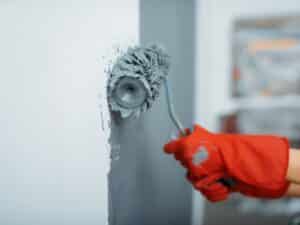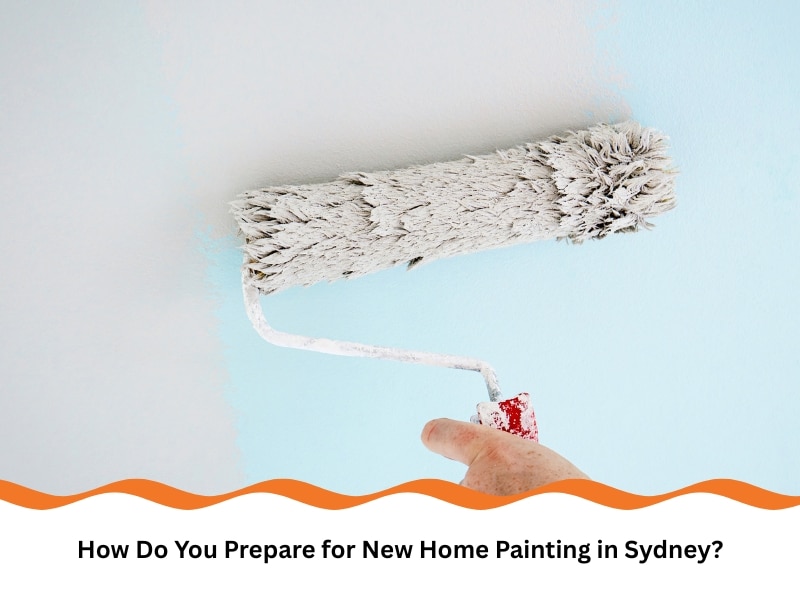Painting your new home is more than a visual upgrade—it’s a long-term investment in comfort and style. While picking up a brush and diving straight in is tempting, a thoughtful approach saves headaches and boosts results. From choosing the right paint to understanding your home’s unique needs, planning is everything. This article walks you through what matters most when embarking on new home painting.
Why is a new home painting more than just a choice of colour?
Many people think painting is simply about choosing colours, but there’s more riding on each stroke. The paint you select impacts your home’s look and protection against wear, moisture, and even pests. Here’s what else comes into play:
- Surface compatibility: Not all paints stick well to every surface.
- Moisture resistance: Essential in kitchens, bathrooms, and basements.
- Thermal insulation: Some paints can reduce heat absorption.
- Maintenance needs: Finish and type affect how often you must repaint.
- Impact on mood: Colours subtly influence how a room feels.
Skipping these factors can cost you both time and cash down the track. Imagine applying a beautiful matte finish in a humid room only to find it peeling within months—it’s a costly redo that could’ve been avoided with a little extra planning.
What are the most common mistakes in painting a new home?
Plenty of eager homeowners make missteps that can ruin an otherwise promising paint job. These pitfalls are not always obvious, but they’re certainly avoidable. Common blunders include:
- Using the wrong primer—or skipping it altogether
- Choosing cheap paint with low pigment quality
- Overlooking ventilation needs while painting
- Painting in unsuitable weather conditions
- Underestimating how long prep work takes

Another frequent error is applying a second coat too soon. You must let the first one dry thoroughly; otherwise, you’ll end up with smudges and uneven textures.
Learn why durability is key in new home painting decisions. Choosing the right materials from the get-go can extend the lifespan of your paint and keep your home looking fresh longer.
Can skipping prep in new home painting lead to long-term issues?
Absolutely. Preparation might be the least exciting part of painting, but it’s also the most crucial. A rushed or neglected prep phase can cause everything from peeling paint to uneven coverage that ruins the look. Prep tasks to never skip:
- Washing walls to remove dust and grease
- Patching holes and sanding rough patches
- Priming surfaces for better paint adhesion
- Taping and protecting skirting boards and fixtures
Besides appearance, skipping prep can affect how well your paint performs. Paint applied on dirty or rough surfaces doesn’t stick well. It starts chipping faster, meaning you’ll redo the job sooner than expected. That’s time and money down the drain.
How can experts simplify the new home painting process?
Hiring a professional can be a game-changer. You get expertise, precision, and peace of mind. Plus, painters can help spot issues before they become costly repairs. They also bring efficiency, allowing you to move into your new home sooner. Here’s what pros bring to the table:
- Proper surface assessment
- Accurate paint quantity estimates
- Knowledge of compatible products
- Fast and tidy work, reducing disruptions

- Safety protocols, particularly around ladders and high areas
Plus, they understand how different environments affect paint behaviour—humidity, sunlight, ventilation—and adjust their techniques accordingly.
You can explore reliable options for new home painting in modern homes to see how working with experienced hands can take the pressure off.
Is it essential to use a colour strategy for new home painting?
Too right, it is. Walking into Bunnings and picking colours at random won’t cut it. A colour strategy ensures your home feels cohesive, inviting, and timeless. A solid strategy includes:
- Understanding your home’s layout and the purpose of each room
- Considering emotional tone (warm vs cool colours)
- Balancing bold statements with neutrals
- Creating flow between rooms using harmonising tones
- Factoring in furniture and flooring finishes
How the right paint colours set the mood in new homes plays a massive role in daily comfort and satisfaction. It can also increase the home’s appeal if you ever decide to sell.
What role does natural light play in paint selection?
Natural light can make or break your paint decision. A lush colour in the store could look drab or overly bright under home lighting. Keep these tips in mind:
- North-facing rooms often suit warmer tones.
- South-facing spaces benefit from cooler shades.
- Test swatches at different times of the day.
- Matte vs gloss finishes also impact light reflection.
Here’s a simple table to help:
Room Direction | Light Character | Suggested Palette Types |
North | Cool, dim | Warm neutrals and rich tones |
South | Warm, bright | Soft blues and greys |
East | Morning light | Creams and blush tones |
West | Harsh afternoon | Muted pastels and mid-greens |
This step ensures your chosen palette stays flattering from dawn to dusk and makes the best use of natural features in your home.
How does paint quality impact maintenance over time?
Low-grade paints may look decent at first, but wear out fast. Investing in higher-quality options reduces the need for touch-ups and repainting every few years. Here’s why premium paint matters:
- Better pigment = richer, more lasting colour
- Stronger binders = resistance to cracking and flaking
- Improved coverage = fewer coats required
- Specialty formulas = resistance to mould, fading, or grime
In the long term, you spend less on redoing the job and cleaning up scuffs. Fewer volatile organic compounds (VOCs) also prevent allergic reactions and indoor air issues.
For homes with older paint layers, there’s another concern—lead exposure risks when removing old layers of paint—so always take care during renovation.
Final thoughts
Painting a new home is an exciting chapter, but also demands thought and care. Each step—from selecting paint types to prepping surfaces—contributes to a longer-lasting, better-looking result. Don’t rush decisions or cut corners. The extra effort up front will save you time and money.
If you’re unsure where to start or simply want a second opinion, get in touch with the team at Sydney Paint Masters. Their friendly advice can help you plan smart, paint well, and enjoy the process from start to finish.

